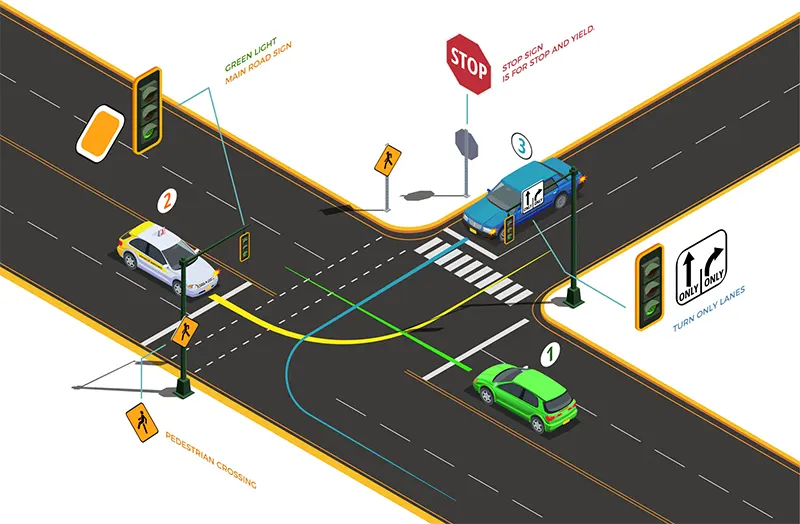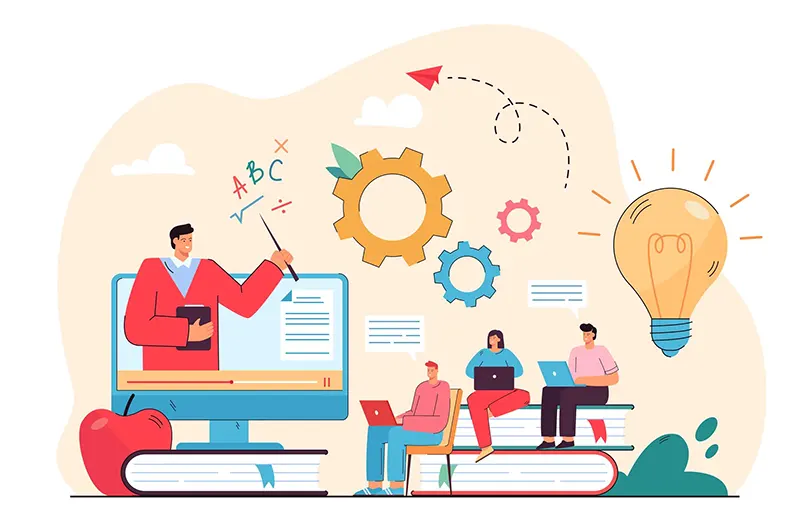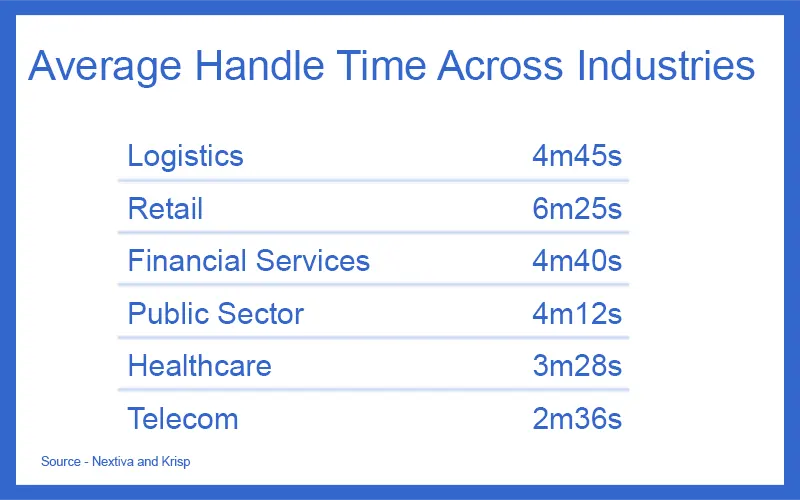7 Ways to Optimize AHT
Key Performance Indicators (KPIs) are vital for performance measurement and optimization in the business world. Without these, you wouldn’t know how you’re doing and how you could improve.
Call Center and Customer Service Operation KPIs function a bit differently when compared to other business KPIs.
For instance, let's consider Average Handle Time (AHT). Now if you ask a novice or a business generalist, they will naturally be bound to say that one should minimize the AHT for the best performance.
Blindly minimizing AHT will be catastrophic for your customer service operations. So the best thing to do is to learn about your KPIs in depth. This will not only help you make the best use of KPIs but will help you optimize them properly.
With that, we should head on and understand what AHT is and the best ways you can optimize AHT for your customer service operations.
What is Average Handle Time (AHT)?
The Average Handle Time or AHT is the complete duration of a customer call. The time is measured in minutes and starts when a customer call is answered and is measured till the call ends.
AHT is extensively used as a KPI in call centers and contact centers to gauge the operational and conversational efficiency of call center agents.
This metric is mainly used for any form of real-time communication viz. Calls, web chat, video calls, etc. There have been instances of AHT being used to evaluate email communication performance. However, I'm not sure how it worked out.
AHT can be used to assess the performance of an individual call center agent and the organization as a whole. This flexibility allows you to optimize performance on all levels in your organization.
AHT has four core components. They are as below:
- Call initiation
- Hold time
- Talk time
- After call work (ACW) like entering customer information.
With that, we’ve covered the basics of what AHT is. We can now move to understand how AHT is calculated.
How is Average Handling Time (AHT) Calculated?
This metric is an average so similar to other averages, you need all the components to calculate AHT. The components are as follows, total Initiation time, total Hold time, total Talk time, total ACW time, and the total number of calls handled.
Thus, the formula to calculate AHT is

Let’s consider an example, a call center agent handles 10 calls in total. The total initiation time was 3 mins, the total hold time was 2 mins, the total talk time was 30 mins and the total ACW time was 5 mins.
Thus, AHT = (3 + 2 + 30 + 5) / 10 = (40) / 10 AHT = 4 mins
Knowing the AHT allows you to optimize the performance of individual call center agents, teams and the organization as a whole. Moreover, it also helps you plan capacity.
When used in conjunction with Net Promoter Score (NPS) and Customer Satisfaction Score (CSAT), AHT allows you to maximize Customer Experience.
With all the basics out of the way, let's learn about the different ways you can optimize your AHT.
How to Improve/Optimize Average Handling Time (AHT)?
As stated earlier, AHT works differently compared to other business metrics that are averages. So minimizing AHT is not going to benefit you. The perfect AHT is when your NPS and CSAT are maximized.
Here’s how you can optimize your AHT and make it perfect.
Improve Agent Training

As a core function, a call center agent has to talk to the customer, understand their problems/grievances and assist them to overcome the difficulties they’re facing.
This requires good communication skills, understanding, problem-solving and other virtues such as patience and empathy.
You need to ensure that all agents are well-trained in the art of customer service operations. Proper training will enable them to effectively manage customer relations and enhance customer experience.
Another thing to ensure is that all agents need to be properly trained to utilize the CRM systems and other tools in the best way possible. When well-trained agents are coupled with effective tools and systems, they yield exceptional results.
Use an Intelligent Call Routing System

Long call hold times are undesirable for both the customers and call center operators. They add an unnecessary cost to your operations and degrade the customer experience.
To tackle the problem of high call hold times and to improve AHT, what you need is an intelligent call routing system.
Earlier workflows required an agent to enquire about what type of assistance a customer required. Then the customer’s call was transferred to the correct agent.
An intelligent call routing system ensures the customer’s call reaches the correct agent right from the get-go. This can either be done using an IVR menu or other automation.
Create an Extensive and Content-Rich Knowledge Base

Having an extensive and content-rich knowledge base is imperative in today’s day and age. If you’ve built a tech product, you need to document the ins and outs of its working and present them in an easy-to-understand manner.
This knowledge base should be easy to access not only for your agents but also for customers. Making it easy to navigate through and find answers to your questions is another area to which you should pay attention.
The knowledge base can contain FAQs, user guides, troubleshooting guides and every piece of information that a user can use to maximize the utility of your offerings.
Having a content-rich knowledge base in place means fewer customer calls concerning trivial queries and minor issues. For other problems, an agent will easily be able to direct the customer to the right piece of content and resolve their difficulty.
Eliminate Data Silos
It is necessary to understand a customer, their background and their usage history to be able to assist them in the best possible manner. However, most firms suffer from various data silos within their organization.
A necessary bit of information that may be available with the sales or marketing team may not be available to the customer service team. As a result, your potential to assist a customer is negatively affected.
By eliminating data silos, you’re making all the information available with the firm about a customer accessible to all departments. This translates to greater insights into a customer’s usage and history.
Leveraging this central database and utilizing insights, the agents will be able to assist the customers more effectively.
Analyze Call Transcriptions

ConnexCS not only allows you to record calls but also lets you transcribe them. This unleashes improvement potentials previously unheard of.
Present frameworks require analysts to listen to call recordings and evaluate an agent’s performance. This process is too slow, relies on a small sample size and cannot be scaled up to enable exponential performance improvements.
With ConnexCS’s call transcription feature, you can extract valuable data from all or a select sample of calls and have the data analyzed quickly.
You will generate a lot of actionable insights and performance monitoring will become easier by unleashing the data locked within audio recordings.
Get in touch with our team today! Revolutionize the way you handle calls and watch your profits skyrocket.
Monitor and Evaluate Agent Performance

One cannot maintain or improve their performance unless they’re monitoring and evaluating it. There’s always room for improvement and you’ll discover it with careful performance monitoring and evaluation.
AHT is one of the several important metrics you can use to evaluate an agent's performance. Have a framework in place for periodic performance evaluation. Thus, you will be able to track performance improvements and improve on those.
With all the data you collect in the process, you uncover a lot of insights. If you adopt a trial and error formula, you’ll know what works best and what doesn’t.
Using these insights and gained knowledge, you can quickly and effectively train new agents and get them on pace with the veterans.
Shorten Call Scripts and Offer Flexibility
The pursuit of offering a consistent customer experience often leads call center managers down the wrong rabbit hole. One ends up with excessively long call scripts and rigidity which make the customer experience consistent but dull and tiresome.
Shorten the call scripts so that they only contain the necessary bits of information. This will not only shorten the AHT but also make a customer’s experience more snappy.
Too much rigidity in the scripts doesn’t allow for an agent’s personality to shine through. Make sure you offer enough flexibility in the scripts. Doing this will also ensure agents will be able to deal with unique difficulties.
The customer experience is important but it needs to be consistently good and not just consistent. A happy customer is what matters and there are plenty of ways to make them happy.
With that, we’re at the end of our list of the top 7 ways to Optimize your AHT. But wait, what should your target be for AHT? What is the perfect AHT? Let’s answer that!
What is The Perfect Average Handling Time (AHT)?
The question might seem like a bit of a clickbait but I'm going to be honest with the answer. There is nothing such as a Perfect Average Handling Time (AHT)!
Every industry is different and your set of customers is different compared to that of your competition. So you will have to experiment and find what AHT yields the highest NPS and CSAT.
But you don't have to walk in blind. A lot of data is collected every year and we know what the average AHTs for each industry are. Look at the table below to find out.

Use the values above as a guide to help you attain the perfect AHT. However, always remember, the perfect AHT yields the maximum NPS and CSAT.
Wrapping Up
We covered an important topic today and understood what AHT is and how you can optimize AHT in the best manner possible.
Lower AHT doesn’t mean you’re doing things right. The perfect AHT is usually around the industry average and results in very happy and satisfied customers.
The pursuit to optimize AHT is really about perfecting the art of effectively helping customers as quickly as possible. Don’t let the numbers tunnel vision you!
What other metrics would you like to learn about?
























































































































